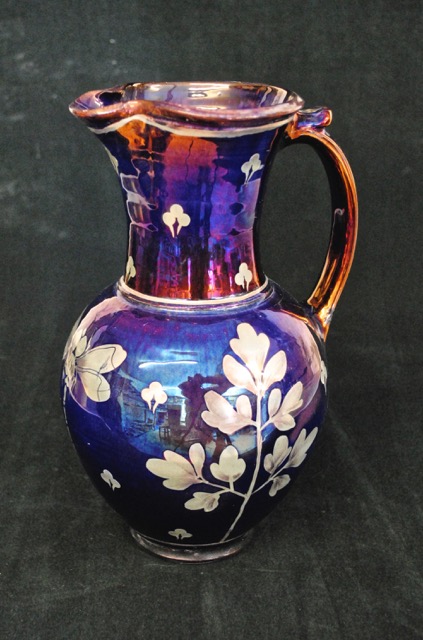Lustreware pitcher by Jonathan Chiswell Jones
The process he has evolved requires 3 firings. First, the dry porcelain ware is spray-decorated with metal insight-live.com/glossary/67">oxides (iron, manganese, copper, chrome and cobalt oxides) and then high bisque fired to cone 9 to bond them on and vitrify the body. Then a cover of lead borosilicate glaze is fired on at cone 04. The lustres (made of clay, which washes off after the lustre firing, mixed wtih silver chloride or silver carbonate) are mostly applied with a brush over the fired 04 glaze and reduction fired on at cone 018. He makes red by blending copper carbonate and bismuth sub nitrate with the clay, and this can be mixed with the silver clay paste to make a ‘gold’. He also sometimes adds silver to the oxide sprays which creates a lustrous underglaze.
Pages that reference this post in the Digitalfire Reference Library:

This post is one of thousands found in the Digitalfire Reference Database. Most are part of a timeline maintained by Tony Hansen. You can search that timeline on the home page of digitalfire.com.
